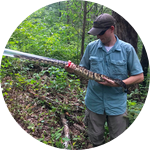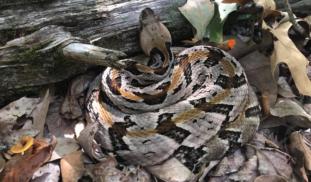Please wait...
About This Project
Snake fungal disease, SFD, is widespread in snake populations across eastern North America. SFD causes skin lesions and often leads to death. We hypothesize increased stress and stress reactivity in timber rattlesnakes makes them more susceptible to SFD and makes it harder for snakes to fight off the disease. We will tag and track 20 timber rattlesnakes to test this hypothesis. We will also use these data to see how SFD influences snake habitat selection and movement patterns.

Browse Other Projects on Experiment
Related Projects
How do polar bears stay healthy on the world's worst diet?
Polar bears survive almost entirely on seal fat. Yet unlike humans who eat high-fat diets, polar bears never...
Uncovering hidden insect diversity associated with a likely undescribed gall-forming midge
Does a likely undescribed species of gall-forming midge (pers. comm. Ray Gagné) on Eriodictyon plants (Yerba...
Macrofungi of the California archipelago
The eight islands of the California Archipelago are a well-studied biodiversity hotspot — but we know almost...





